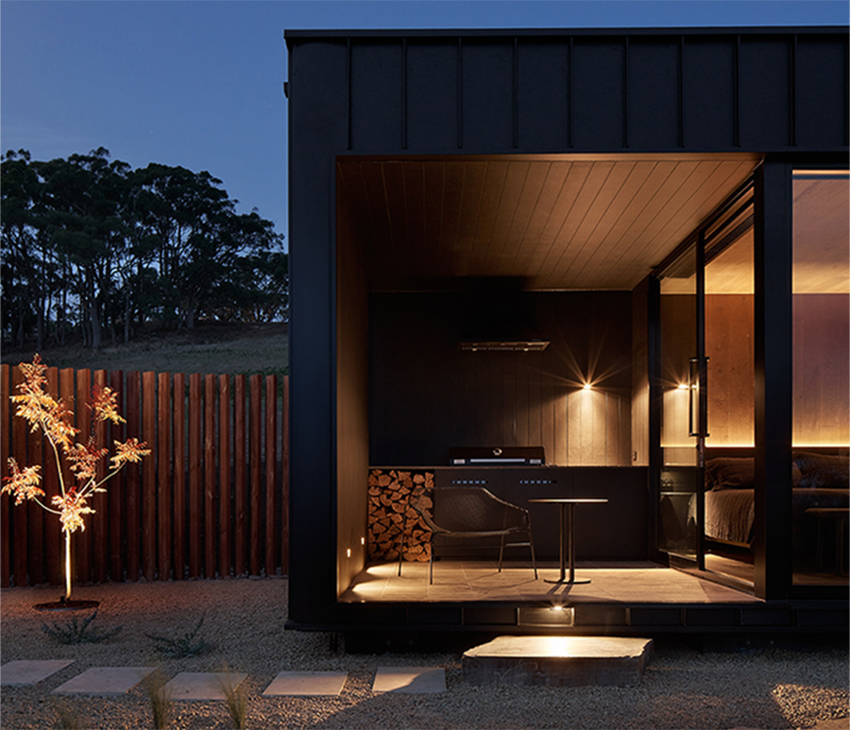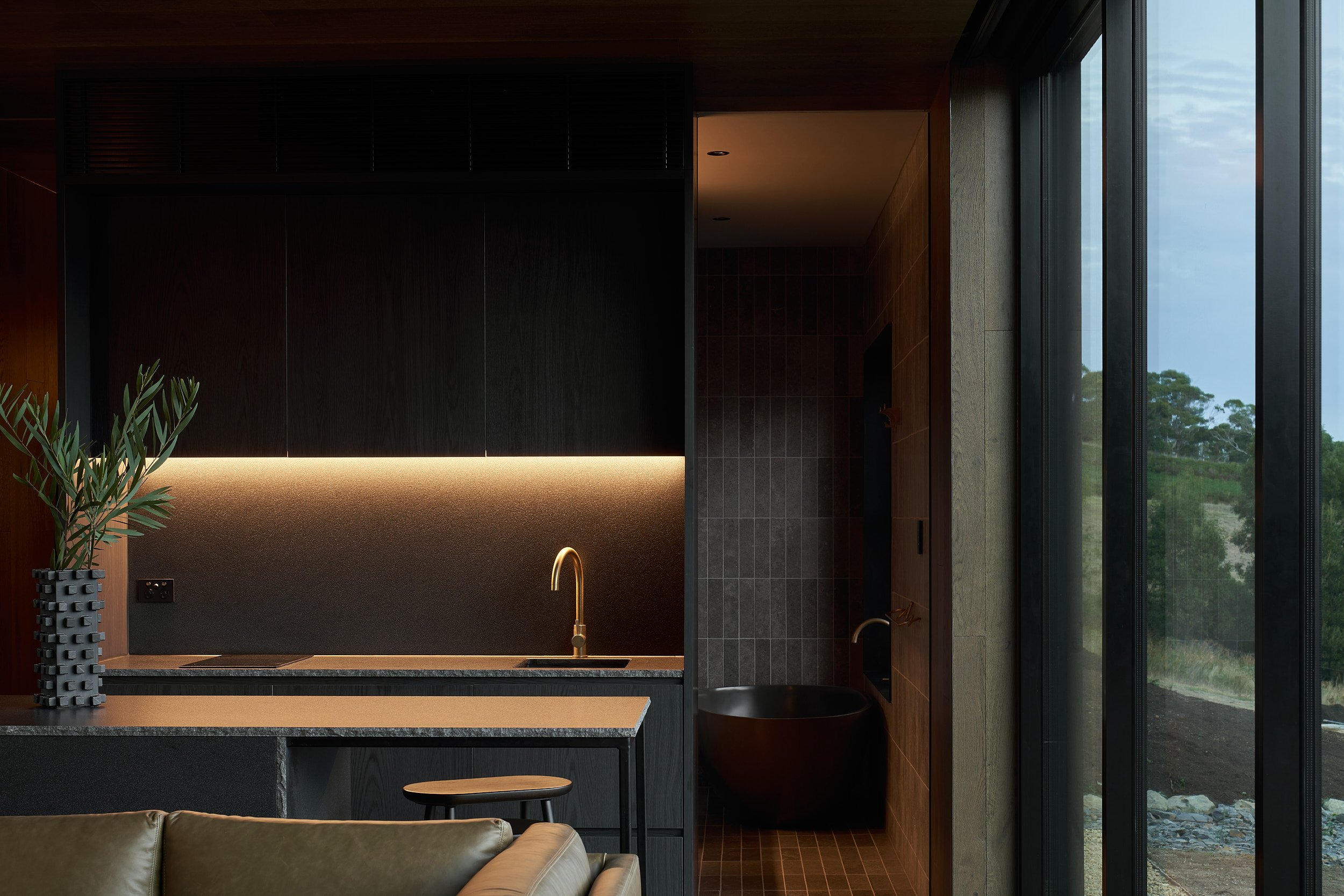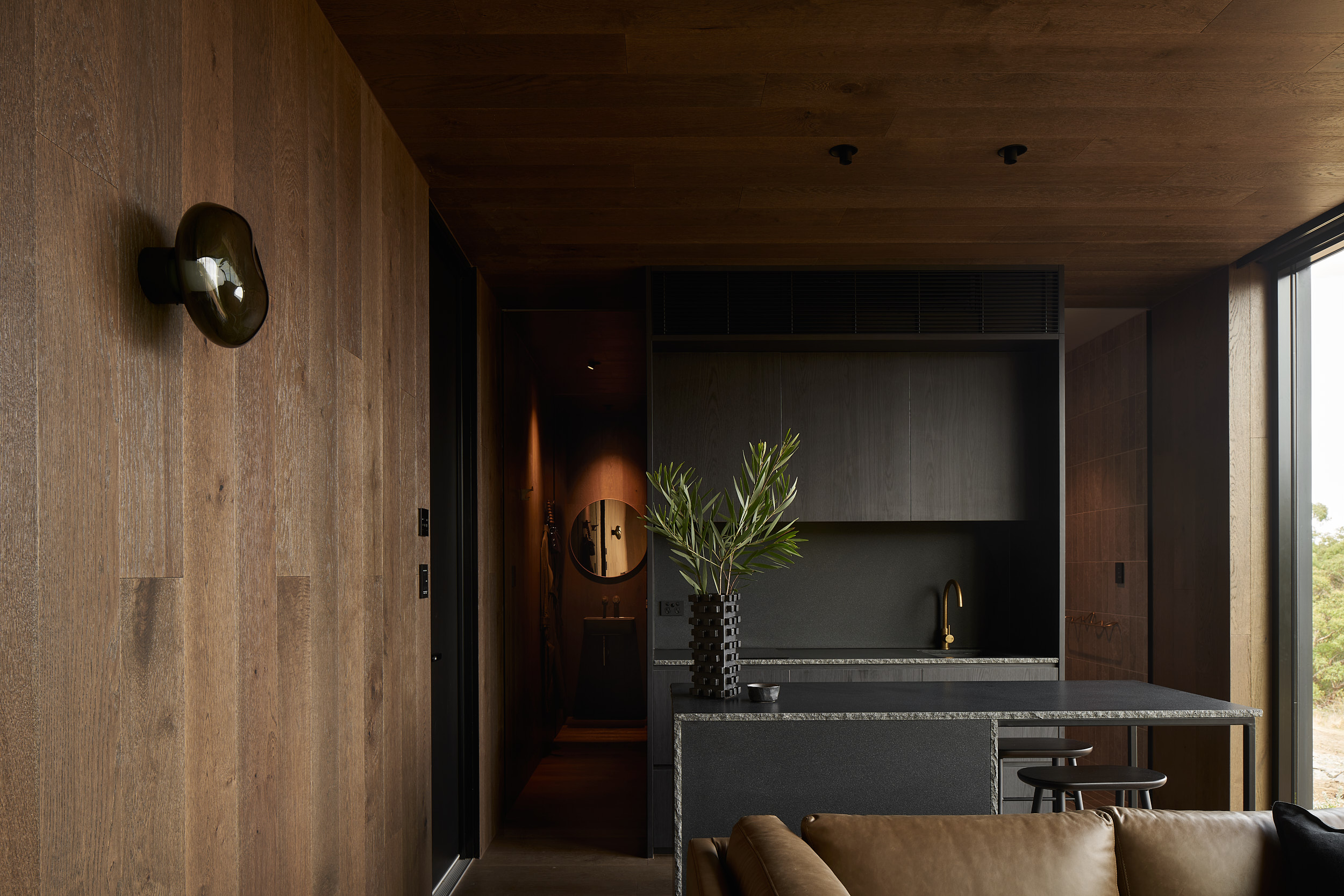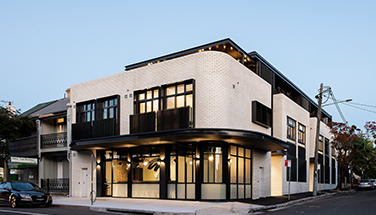Project completed 20 April 2022
ESCA, a decentralised luxury accommodation business, collaborated with landowners to create a luxurious eco-tourism destination on a greenfield site in South Australia’s Inman Valley. The project consisted of two standalone resort-style suites that feature high-end amenities and sweeping views down the Inman Valley to Encounter Bay and the Southern Ocean

Background
ESCA, a decentralised luxury accommodation business, collaborated with landowners to create a luxurious eco-tourism destination on a greenfield site in South Australia’s Inman Valley. The project consisted of two standalone resort-style suites that feature high-end amenities and sweeping views down the Inman Valley to Encounter Bay and the Southern Ocean. Described as luxury off grid accommodation elevated in the heart of South Australia's Fleurieu Peninsula, ESCA at Nest & Nature relies on its own energy infrastructure, boasting an off the grid system of solar panels and batteries, making it a premium getaway that combines the rustic setting of the Inman Valley with a luxurious modern hotel aesthetic.
The Project
The two Nest & Nature suites required an air conditioning solution that could meet strict design and energy management criteria. The system also had to successfully integrate with a Schneider automation system, which would trigger a welcome scene when guests checked in. This would include opening blinds, setting mood lighting, and activating the air conditioner at a set temperature.
To successfully create a sleek and contemporary environment, an integrated bulkhead air conditioning solution that could be concealed was preferred. As the suites were to be powered by the site’s self-sufficient power grid, the air conditioning system needed to be efficient and include energy management features.

Challenges
The suites required bulkhead systems with return air features to ensure air flow efficiency, however this proved challenging as joinery and cavity slider door systems impacted available ceiling space. A primary objective for installation was to ensure the air conditioner successfully integrated with the specified automation system. This created the challenge of ensuring a suitable interface between the Fujitsu system and the Schneider thermostat controller without affecting the automatic functions (such as lighting) already in place.
Outcome
The Fujitsu General R32 Bulkhead Reverse Cycle Split System was installed in each suite as this light commercial solution could fit within the tight ceiling cavity, which meant it had minimal impact on the modern and luxurious interior. These units were also able to deliver a return air system that maximised heating and cooling performance. The system met the energy performance criteria with R32 refrigerant, all DC componentry, and inverter technology, to maintain high-performance while minimising power consumption.
Fujitsu General’s units were, for the first time in Australia, successfully fitted with UTY-TTRXZ1 thermostat converters that would allow the air conditioning system to integrate seamlessly with each suite’s automated system. The converters connected to both the indoor unit bulkhead from one end, and the Schneider supplied thermostat controller at the other end, allowing the units to be controlled via the Schneider thermostat controller and Schneider BMS.

“
If we can achieve a design solution that seamlessly integrates air conditioning into the overall aesthetic of the suites, then we’ve succeeded. Fujitsu helped us do that. Considering some of the construction challenges presented, overall, it was an excellent outcome.” Ryan Brown, MDLR chief executive officer.
Product Overview
- 2 x UTY-TTRXZ1 Thermostat Converters
- 2 x ARTH18KLLAP/AOTH18KBTA 5.0kW R32 Bulkhead Reverse Cycle Split Systems


